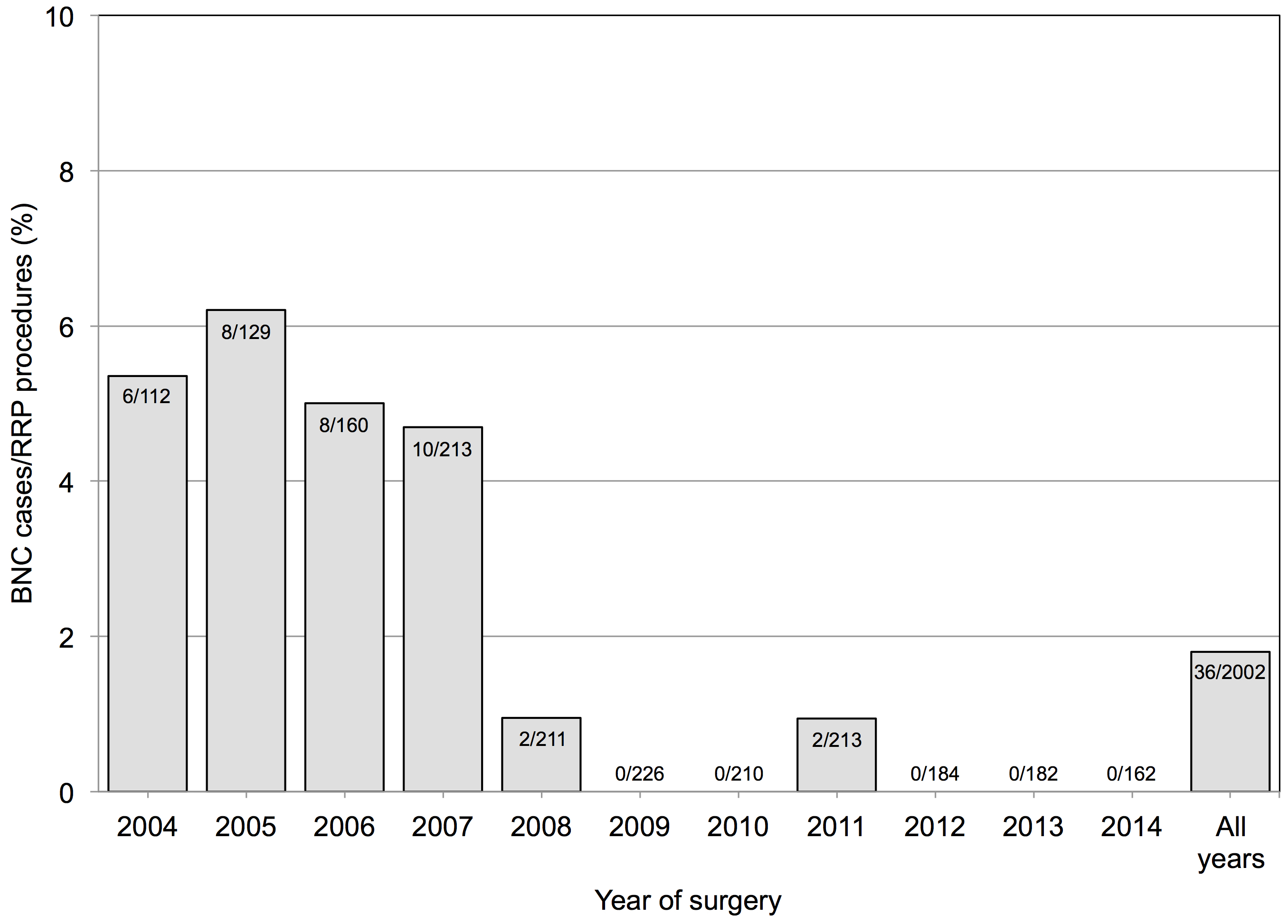|
Back to 2015 Joint Annual Meeting
Bladder Neck Contracture After Robotic Prostatectomy: Incidence, Prevention, and Treatment
Joseph Wagner, Max Jackson, Ilene Staff, Peter Haddock
Hartford Hospital, Hartford, CT
Introduction: Bladder neck contracture (BNC) is a well-known complication after radical prostatectomy (RP). We examined the incidence of BNC with increasing surgeon experience, and the treatment and outcomes of this complication.
Materials & Methods: Patients undergoing robotic prostatectomy by a single surgeon between January 1, 2004 and December 31, 2014 were identified. From this cohort, patients who developed BNC were selected. Patients completed a self-administered EPIC 26 quality of life questionnaire pre-operatively and at each follow-up visit. Continence was defined as no pads or 1 pad with occasional dribbling. The incidence, treatment, and outcomes for these patients was examined.
Results: 36/2,002 (1.8%) patients developed a BNC at a median of 182 days. With experience, the rate of BNC decreased (Figure 1). 22 patients underwent a single dilation and/or transurethral incision while 14 patients required more than one procedure with a continence rate of 83% (30/36). Of the 6 incontinent patients, 1 declined further treatment and 2 had sphincters placed. 3 patients (8.3%) had recalcitrant BNCs; 1 underwent open urethroplasty while 2 with concurrent bladder non-compliance underwent a robotic catheterizable bladder augment.
Conclusions: In a large, single surgeon series, post-RP BNC incidence decreased with surgical experience. The majority of patients responded well to dilation and/or incision with a continence rate of 83%, while a minority required more extensive surgery with a continence rate of 100%.

Back to 2015 Joint Annual Meeting
|

